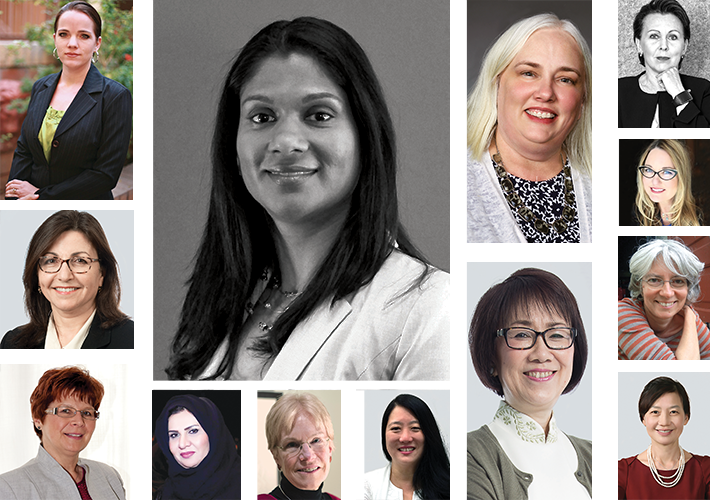
In Their Own Words
Key excerpts from conversations with women leaders in standardization.
Watch our social media channels on Facebook and Twitter throughout March, which is Women’s History Month, for more quotes from distinguished women in standards.
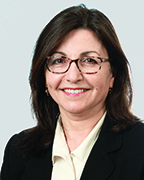 Hind Abi-Akar, Ph.D.
Hind Abi-Akar, Ph.D.
Fluids technical expert, Caterpillar Inc., and first secretary of the ASTM committee on petroleum products, liquid fuels, and lubricants
“Being a D02 officer provides a window to the hard work and commitment that takes place behind the scenes to ensure standards development is progressing well and per the society’s bylaws and rules. My learning process of becoming an officer was certainly facilitated by the other officers’ willingness to lend a hand and by their dedication and expertise. Being an officer is a great experience, providing learning and exposure. It is an exercise in leadership with direct and measurable results and gratification. This is especially true for the largest committee in ASTM, D02. The feeling that the work we do can impact a significant global industry adds to the sense of responsibility and commitment.”
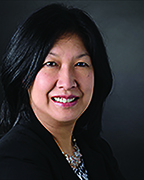 Joannie Chin, Ph.D.
Joannie Chin, Ph.D.
Deputy director of the Engineering Laboratory, U.S. National Institute of Standards and Technology, and member, ASTM International board of directors
“I am continually learning that measurement science, when incorporated in standards, has an important impact on innovation and competitiveness. It speeds up innovation by providing new ways to understand and improve product characteristics or materials that previously couldn’t be measured. And it levels the playing field for industry by providing trusted ways for buyers and sellers to measure quality and performance.”
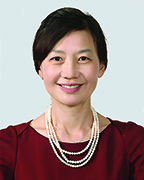 Geewon Chung, Ph.D.
Geewon Chung, Ph.D.
Director, international standards division, Korean Agency for Technology and Standards
“What I have realized is that a ‘standard’ is a very basic fundamental of every work regarding standardization, technical regulation, conformity assessment, and TBT [technical barriers to trade]. Standards should come from a harmonization process reflecting all the voices of stakeholders, including regulatory authorities, consumers, manufacturers, etc.
“If a country does not participate in international standardization, this could result in international standards without the reflection of all needs or benefits. Suppose that international children’s product standards are made without considering or reflecting the average weight, height, or other age-specific factors of children in Korea. Then, regardless of quality, wouldn’t that be problematic for me to buy those products suitable for only foreigners? We are living in a global society that is getting closer, and all the opinions of countries in the world should be applied to the development of international standards.”
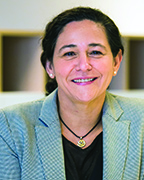 Elena Santiago Cid
Elena Santiago Cid
Director general of the European Committee for Standardization and the European Electrotechnical Committee for Standardization
“I think it is very important to be passionate about what we do; when we enjoy doing something, we are ready to invest our energy, creativity and effort.
“I was a technical expert, and I was at the European Commission, where I learned the practical link between standards and legislation, before I joined the European Committee for Standardization as director external relations. I saw the value of standards as a market access tool — the beautiful aspect of standardization is that it is about knowledge management and technical innovation, and also about cultural diversity, understanding human behavior, building teams and networks, and making the best from it. It is something like “when science meets culture and behavior” and I love it. I don’t think it is by chance that I was born on World Standards Day.”
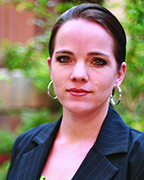 Teresa Clark
Teresa Clark
Vice president, product development and sustainability, Enso Plastics, and chairman of the ASTM committee on waste management
“Don’t be afraid to make suggestions or take on new standards. You are not expected to know everything about the process and your staff manager is always there to help. The ASTM standards development process is collaborative, so try to involve others. And expect negatives on your ballots – don’t take it personally. Talk through the negative with the person casting the vote to see if you can reach common ground before another vote. And, pay attention to your industry to identify new areas of standards development. Where is there lack of consistency? Where could standards facilitate industry improvements? And, what is the future of your industry and what standards could drive that future? Your individual insight and involvement is important so get involved!”
 Nancy Cowles
Nancy Cowles
Executive director, Kids In Danger
“When I came to KID, one of the first things I did was to attend an ASTM series of juvenile product standards meetings. It became clear to me that the consumer voice was vital in the process – to encourage strong consumer protections in the standards, and to bring a little reality to how products are used day to day. As a mother of three children, I was able to explain why some expectations of use and supervision were not likely in the real world. We have stayed involved in the process with juvenile products and expanded to toys, laundry packets, and furniture as hazards have arisen. Being a consumer voice at these meetings is vital – we need more!”
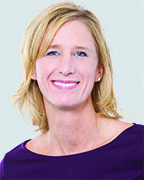 Kimberly Eberwine
Kimberly Eberwine
Senior counsel for Procter & Gamble’s North America Fabric Care Business
“I have worked on questions related to the various product performance standards touching our fabric care business. Over the last several years, I’ve represented the company in developing a voluntary safety standard for liquid laundry pacs. Consumer safety is a top priority for P&G, so the development and implementation of a robust safety standard for liquid laundry pacs was and still remains a top priority our team.
“The collaborative nature of the [ASTM] process, which was enhanced through in-person meetings, enabled a deeper understanding of different perspectives and the various positions brought to the table. Through our ongoing dialogue, I hope, we have built a mutual respect and trust that will continue to move us forward."
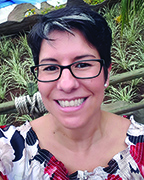 Franceen Gonzales
Franceen Gonzales
Executive vice president, business development, Whitewater West
“My first job was at a local waterpark working in pool maintenance and as a lifeguard. I thought this would be just a summer job. I had planned to go to medical school after college, but an emergency at the park became a major turning point in my career. I wanted teams to know how to prevent incidents and know how to respond when they do happen. I would apply my science-oriented, analytical, process-driven mind to making my park and others in the industry - safer.
“Enter ASTM. In 2001, there were no waterpark standards. I joined the F24 committee [amusement rides and devices] to write the standards for waterslides and aquatic play. I applied my experience as an operator. Now, I’m on the supplier side for waterparks and other niches of the amusement industry and I get a chance to apply that experience in design and manufacturing to those standards.”
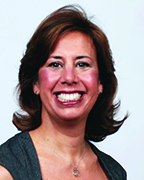 Barbara Guthrie
Barbara Guthrie
Vice president, corporate social responsibility, UL LLC
“The most satisfying thing about working at UL is in knowing you made an impact. Whether you’re helping a colleague figure out how to best replicate thermal runaway on a lithium-ion battery; mentoring a young engineer on going back to school for a master’s in engineering or business; “edu-taining” a group of 4th graders on how to be Safety Smart; or it’s midnight, the voting has closed, and you celebrate the passing on the enhanced requirements for smoke alarms in UL217; you can lay your head down at night and know you worked for a safer world.”
Aya Harb
Associate director, Standards Business Development, IHS Markit
“The individuals I am privileged to meet and work with always inspire me to continue learning. Standards truly do help change and improve the world we live in, and that is something I am proud to be a part of.”
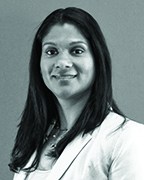 Urmilla Jokhu-Sowell, P.E.
Urmilla Jokhu-Sowell, P.E.
Technical services and advocacy director, National Glass Association (formerly Glass Association of North America)
“I love what I do and have a passion to continue growing and learning. This has helped me stay engaged in standardization, which is also ever-changing. I like that parties interested in solving an issue or establishing an industry baseline can come together to work on a standard that will benefit the public community. The outcome of efforts is tangible in our own cities and neighborhoods.”
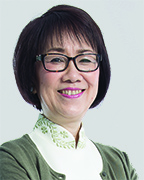 Choy Sauw Kook
Choy Sauw Kook
Assistant chief executive (quality & excellence), SPRING Singapore
“My engineering background, professional connections, and experience with SME [small and medium-sized enterprises] policies allowed me to better appreciate and communicate how standards could be strategically leveraged for growth and competitiveness. In 2016, [SPRING] launched our new Quality and Standards vision, which includes leveraging standards to support industry transformation efforts and emerging areas as well as developing Q&S competencies in the workforce.
“Apart from national standardization work, I represent Singapore in key international and regional fora. I was elected to be ISO vice president (technical management) for 2019-2020. I hope to lay a strong foundation for standards development to keep pace with rapid technological developments.”
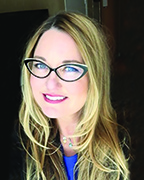 Joan Lawrence
Joan Lawrence
Senior vice president, standards and regulatory affairs, The Toy Association
“Working in toy standards development is a way to improve children and families’ everyday existence. And, as a mom myself, every day I see the importance of what we are doing. But protecting kids is more than standards development. As the Toy Safety Mom, my role extends to consumer outreach and education too; I try to inform families on what standards exist and what parents and caregivers can be doing to help keep children’s playtime fun and safe.”
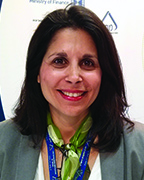 Revital Maor
Revital Maor
International standardization coordinator, SII - The Standards Institution of Israel
“At SII, I am exposed to the wonderful process in which innovative technologies are transformed into responsible, safe procedures. One program here, of the Ministry of Economy and Industry Foreign Trade Administration and SII, aims to increase Israel‘s export and global trade by encouraging Israeli industries to take an active part in the process of developing international standards. What makes my job very interesting and challenging is that it is all about technological innovations. I got to SII by chance, but once that I got carried away in the content of my innovative work, I realized that I was here to stay.”
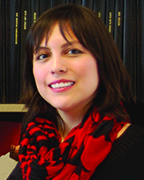 Michelle Maldonado
Michelle Maldonado
International affairs assessor, Servicio Ecuatoriano de Normalización (INEN)
“My career path in standards has led me from being a standards developer to my actual position as an adviser in international relations to the executive director at INEN. Instead of focusing in one field of study, I work on learning about other standards organizations and see what opportunities there are for INEN to build its capacities and work with high level management in order to make them a reality.
“What I find most rewarding is the opportunity to collaborate on different projects with standard developing organizations around the world. You have the opportunity to learn from their experiences, exchange ideas, and work together. You find out that although we have different backgrounds, many of the problems we face are the same. All of us are working towards a common goal, which is to make a better world by providing consumers with global standards that meet their needs.”
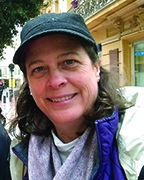 Loui McCurley
Loui McCurley
CEO of Pigeon Mountain Industries Inc.
“My work is an outflow of my passions and my life. I would drive local climbing shop owners crazy asking technical questions about ropes and equipment! At that time, there was very little standardization in rescue equipment and reporting, and almost no field data so I founded a nonprofit research and testing lab to answer my own questions. I wanted to be able to more effectively calculate safety factors and predict system performance in the field. Then I took a technical role at PMI, writing standards and other technical documents, doing testing, and representing the company in standards and industry organizations. Now I serve as CEO, and standards and technical excellence are still a big priority for me.”
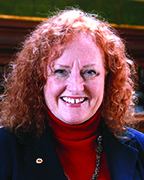 Mary McKiel, Ph.D.
Mary McKiel, Ph.D.
President of The McKiel Group and Communication Liaison Officer, Academy Standards Board
“Standards have been the substance of my career and post-career. Like so many others, I did not plan to be a ‘woman in standards,’ but over the course of more than 40 years working with and interacting with exceptional colleagues involved in standards, opportunities arose to put standardization at the forefront of who I am as a professional. Networking and sharing experiences with other women in this field have enriched my life and opened new avenues of understanding about the incredible role that women play in shaping industries, government programs, technology, and the important place that U.S. standardization has in the global economy.”
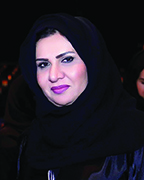 Amina Ahmed Mohammed
Amina Ahmed Mohammed
CEO, Emirates International Accreditation Center
“After my graduation from Emirates University I started to use International standards in testing engineering materials. As head chemical testing unit of engineering materials, quality officer and assessor, head of the Food & Environment lab section of Dubai Central laboratories, the world of standards was our companion. I used to say to my colleagues… no modernization if no standards… standards are our way to a happy city.
“I did not know that this world of standards would lead me to leadership, but with encouragement, women have reached the highest administrative positions in government. And thanks to a team of talented staff comprised of almost 50 percent women, the center became the first internationally ILAC MRA [International Laboratory Accreditation Mutal Recognition Arrangement] recognized body in the region.”
Cassy Robinson
Physical scientist, U.S. National Institute of Standards and Technology’s Standards Coordination Office
“In 2001, I was working as an engineer in robotics and remote systems. My group was deployed to Ground Zero following the 9/11 attacks with a cache of robots, remote video equipment, and other remote tools to assist in searching for survivors and remains. That work led to a study of urban search-and-rescue technology needs, revealing a great need for standard test methods for S&R robots. When ASTM E54 [committee on homeland security applications] began developing robot test methods, I joined the committee. I was detailed to the U.S. National Institute of Justice Standards and Testing Program and have now been with the NIST Standards Coordination Office for five years. I went from knowing almost nothing about standards to spending most of my time developing standards.”
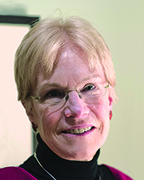 Mary Saunders
Mary Saunders
Vice president of government relations, American National Standards Institute
“I’ve come full circle with respect to my involvement in standards in my current job at ANSI. I stumbled into the standards field as a junior staffer in the U.S. International Trade Administration. I saw early on the practical impact of standards in shaping markets and in regulating health and safety. I also spent quite a few years explaining the U.S. standards system to foreign government experts. I worked to enhance the public sector side of that partnership for many years. Now I’m engaged on the private sector side of the partnership.
“The knowledge and expertise I’ve built up over the years has opened up career opportunities and given me a broad network of friends and colleagues with whom I really enjoy interacting and from whom I learn something new every day. What could be better?”
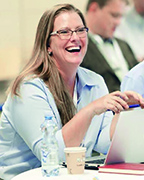 Julia Schimmelpenningh
Julia Schimmelpenningh
Global applications manager, Eastman Chemical Co., and chairman of the ASTM committee on performance of buildings
“Over time and with exposure to the documents, the people, and the process, I have come to see standards not only as necessary, but also as works of art. They are symbols of successful negotiation, scientific rigor, and clear communication, which work to make our world better. As I have gotten further involved in the development of standards, I have found an unexpected thrill at reaching consensus within a large group and seeing our work published, used, and referenced in the industry.”
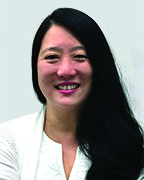 Pamela Miki Shinkoda, P.Eng.
Pamela Miki Shinkoda, P.Eng.
Manager, technical solutions and quality, CGC Inc., and chairman of the ASTM committee on gypsum and related building materials and systems
“When I first joined this industry, there were no other women involved in committee or association work on the technical side. I felt quite isolated. No one treated me badly, but no one welcomed me either. I made a conscious decision to step out of my comfort zone and create a spot for myself.
“I put time into meeting preparation. I started by reading the agenda, preparing my thoughts on the topics of interest to me, reading old minutes, calling to ask about the history of a topic, and noting things I wanted to know more about or didn’t understand. In a meeting, I listened, but when I didn’t understand or wasn’t sure why we were headed down a certain path, I didn’t hesitate to ask a question. I got involved, spoke up, asked questions, and offered opinions. This caused others to welcome me into the conversations because now I was an asset to the discussion, not just an observer.”
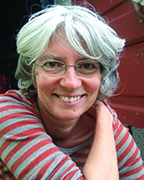 Barbara Sorgato
Barbara Sorgato
Secretary general, European Consortium of Anchors Producers
“I had worked for a SME producer of structural fixings. There I discovered that multinationals wrote standards on these products for their own needs, to the detriment of SMEs, but I couldn’t do anything against it. While my younger child was 5 months old the SME owner created a European consortium to defend European SMEs in standardization. I became its guide and I grew it together with my children, intertwining the work with my personal life. I believe a concatenation of family situation, life, love, lightheartedness, and pure chance brought me to this job. My job is to take part in standardization by representing not a single manufacturer or a member state, but a small Europe: a group of European SMEs, all competitors on the same market, joint in the standardization activity.”
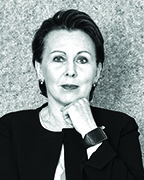 Elisabeth Stampfl-Blaha
Elisabeth Stampfl-Blaha
Managing director, Austrian Standards International
“The rich diversity in standardization systems is a key feature to me. It is about interaction with people from all around the world. It is about topics from traditional sectors such as building to new topics such as blockchain and nanotechnology. It originated in technical sectors, but today also addresses societal issues such as the sharing economy, smart cities, or assisted living. It breaks down silos of professions and connects people who would normally not meet, and it allows me to communicate with persons as diverse as craftsmen and scientists, CEOs and politicians. Which other professional environment offers you such a huge and interesting spectrum of experience?”
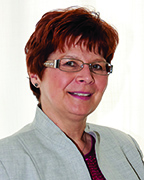 Vicky J. Taylor
Vicky J. Taylor
Senior research technologist, R&D Center, INVISTA, and member, ASTM International board of directors
“My career with DuPont/INVISTA has been interesting, challenging, and uniquely satisfying, and each role has continued to build on a strong foundation of standards. D13 [textiles] has provided the standards for specifying textile yarn, fabric, or end use products. As part of [the D13 inflatable restraints] group I was able to see how a new product that saves lives could come into existence and how this committee enabled its success, in the introduction and development of the side curtain airbags. My participation means linking and working in other parts of the world to ensure consistency and security in these important safety systems that save lives everywhere.”
Mona Wolf
Founder and president, The Wolf Group
“When I first started working in sensory evaluation, I told my boss that I didn’t know much about sensory, and she said they would train me. The first thing she suggested was contacting Jacquie Beckley, who was then in charge of sensory evaluation for Quaker Oats. Jacquie’s first suggestion was for me to join ASTM E18 [committee on sensory evaluation] and listen to the wealth of knowledge that attended each meeting. I was hooked immediately, and have been a member ever since.”
A United Nations Program for Gender Equality in Standardization
The UN Economic Commission for Europe looks to mainstream gender perspective in developing and implementing standards.
By Lorenza Jachia
The UN system-wide Policy on “Gender Equality and the Empowerment of Women” commits all UN bodies to mainstream gender equality throughout their operations.
I am a UN staff member, responsible for a large area of work on standards-related issues. I saw it as a personal and professional responsibility to present member states with a proposal to mainstream a gender perspective into the development and implementation of standards and standardization policies. The proposal was approved in November 2016, resulting in the creation of the “Gender-Responsive Standards Initiative.”
Standards and norms spell out the desired characteristics of the products we use every day and the equipment we depend upon. They are the foundation of many laws and bylaws that compel change in consumer and producer behavior. So it’s crucial that standards represent the interests, needs, experiences, and expectations of both men and women.
The Gender-Responsive Standards Initiative has two interlocking goals: to ensure a more balanced participation of men and women in the development of standards and to develop ways to identify standards that are gender-biased, and correct that bias if present.
Gender-responsive standards are one way to reduce gender inequalities in access to and control over resources, innovations, and more generally the benefits of development. By advancing women’s equal participation with men as innovators and decision-makers, this initiative helps correct a historic imbalance in standard-setting and enhance the contribution of standards in reaching the United Nations’ Sustainable Development Goal #5 on Empowering Women and Girls.
The initiative’s concrete actions include:
- Promoting women’s participation in standard-setting and processes for the development and implementation of technical regulations;
- Developing and sharing best-practices for taking biological and cultural differences into account in standards development and implementation;
- Developing gender indicators and criteria that can be used in standards development; and
- Identifying and undertaking actions to ensure that standards contribute to gender equality.
One area we should prioritize are health and safety standards. For example, gender-specific sensitivities are not sufficiently taken into account in defining occupational exposure to hazardous substances. Workplaces, in many sectors, are ill-adapted to women’s needs, leading to their exclusion from professional opportunities.
This is the case, for example, in the construction and home-building industry where, according to the International Labor Organization, women represent fewer than 5 percent of workers. Standards bodies and policymakers can contribute to, for example, changing the standards on personal protective equipment to make sure they meet the needs of women, too.
Another example is the potential for gender discrimination in management system standards.
Mainstreaming gender in management practices will lead to workplaces that are inclusive for staff and the community and radically transform relationships, processes, and social outcomes. In this area, the work of the initiative can be aspirational and share best practices from innovative experiences in businesses and communities.
Gender is a fundamental tenet of the United Nations Sustainable Development Goals of the 2030 Agenda for Sustainable Development. While the empowerment of women and girls constitutes just one of the 17 goals, it is a prerequisite to achieving each and every one of the goals. So it’s appropriate to consider standards through a gendered lens; one that recognizes systematic misrepresentation and asks how the process can better support the fight for gender equality.
Lorenza Jachia, a trade economist, has been working at the United Nations since 1995, first with the United Nations Conference on Trade and Development and then with the United Nations Economic Commission for Europe. An expert in preferential trade agreements, she has worked on the topic of deep economic integration including through the harmonization of regulations and standards. The focus of her current work is the integration of standards in regulatory work and policymaking, in particular to support sustainable development and the realization of the Sustainable Development Goals of the UN 2030 Development Agenda.
 SN Home
SN Home Archive
Archive Advertisers
Advertisers Masthead
Masthead RateCard
RateCard Subscribe
Subscribe Email Editor
Email Editor